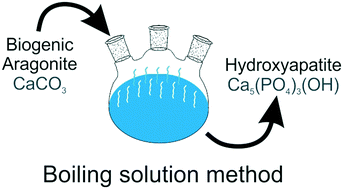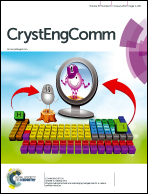Conversion of biogenic aragonite into hydroxyapatite scaffolds in boiling solutions
Abstract
The interaction of Sepia officinalis cuttlefish bone, made of aragonitic CaCO3, with (NH4)2HPO4 boiling solutions produces porous carbonate-bearing hydroxyapatite (Ca10(PO4)6(OH)2) scaffolds with extremely large specific surface area. Percentages of aragonite into hydroxyapatite conversion close to 90% are reached after 10 hours for all the conditions explored, though higher efficiency of the transformation process is achieved by increasing the concentration of the (NH4)2HPO4 solution. The conversion has a pseudomorphic character since it occurs with the accurate preservation of the external shape as well as the primary macro- and microtextural features of the biomineral. Moreover, the mineral replacement transformation is accompanied by a significant increase in surface area, which most likely relates to newly formed porosity. We proposed that this transformation occurs through an interface coupled dissolution–crystallization mechanism, which is continuously promoted by the release of CO2 to the atmosphere. The generation of newly formed porosity would be the consequence of the preservation of the biomineral's external shape, which requires the balance of both molar volume and solubility changes involved in the mineral transformation.



 Please wait while we load your content...
Please wait while we load your content...